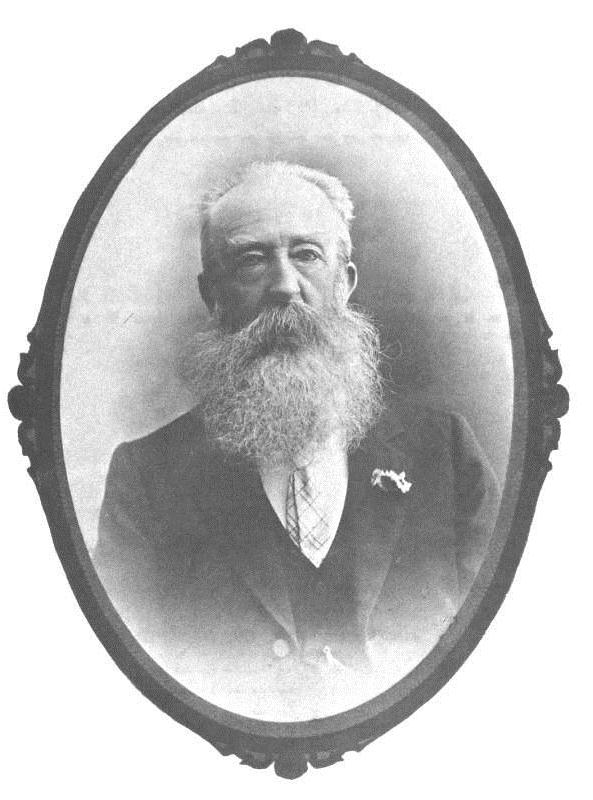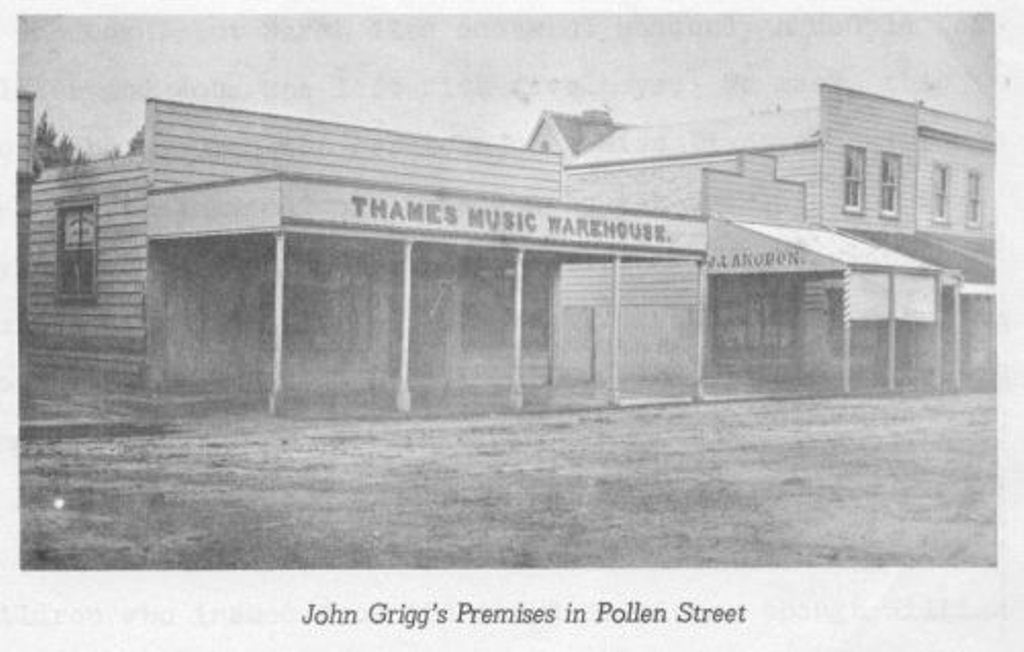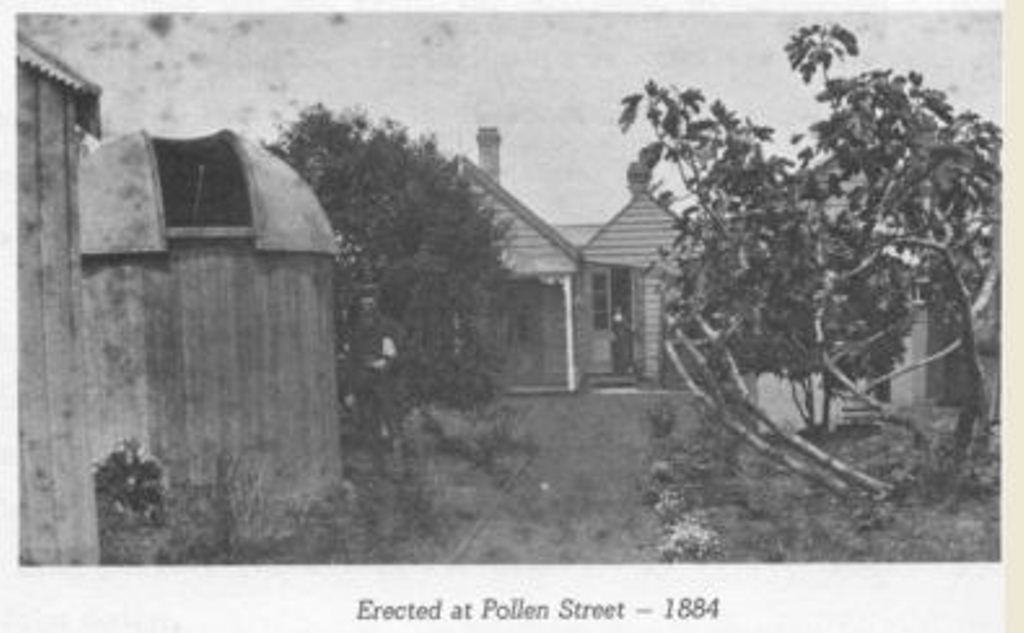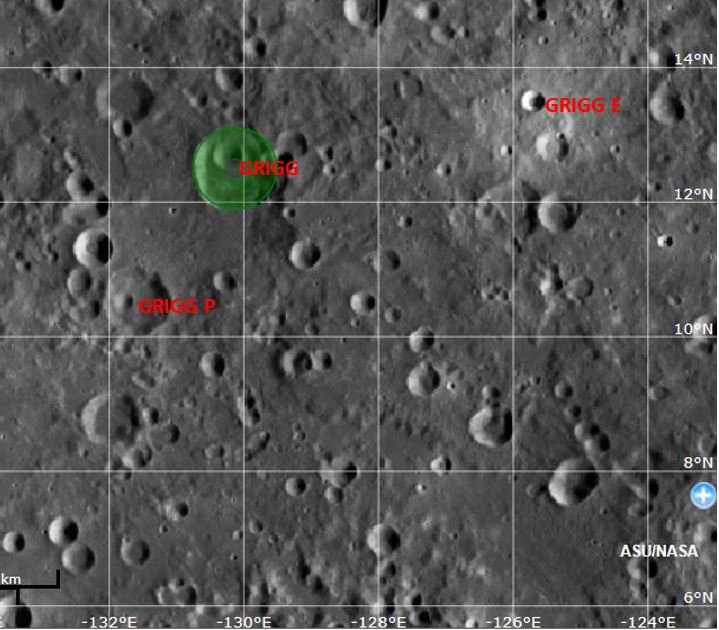Table of Contents
On 21 September 1863, John Grigg arrived in New Zealand on the Annie Wilson with his wife and three children.

Following his wife Emma’s death in 1867, John moved from Auckland to Thames. He subsequently married his second wife Sarah, who also pre-deceased him, and some years later he married his third wife Mary.
In total, he had 10 children with his three wives, and today has many descendants in both New Zealand and Australia.
In Thames John built a large shop with living accommodation in Pollen St, establishing a furnishing and upholstery business and later a music warehouse.

However, his main claim to fame was amateur astronomy. In 1874 he had made preparations to observe the transit of Venus across the face of the sun. Due to bad weather, the observation was incomplete, but he successfully viewed the subsequent transit in 1882. Then in 1884, he constructed an observatory on the property. His observations included transits, solar and lunar eclipses, occultations of stars by the moon, sunspots, comets and nebulae.

Another of his notable achievements was the application of photography to astronomy. Between 1890 and 1910 he used cameras attached to his telescope to record sunspots, the moon, a solar eclipse, and two comets in 1901; all recorded in the official records of the Royal Astronomical Society. The cameras, together with the mechanical equipment (an equatorial mount) necessary to move the camera at the correct speed to keep the object tracked for long periods (sometimes for hours), were designed and built by John. He stands out as one of New Zealand’s earliest astrophotographers.
He eventually moved to Queen St, Thames, where he built a new house and re-erected his observatory.
He had begun systematic comet seeking in 1887, but it was not until 22 July 1902 that he made his first discovery. This object was Comet 1902 II P/Grigg-Skjellerup (or 26P/Grigg-Skjellerup) and has one of the shortest periods of any known comet. He discovered his second comet on 17 April 1903, Comet 1903 III/Grigg, and his third comet, known as Comet 1907 II/Grigg-Mellish (or C/1907 G1 Grigg-Mellish), on 8 April 1907.
In recognition of the latter two discoveries, he was awarded Donohoe Comet-Medals (numbers 45 and 63) by the Astronomical Society of the Pacific.
John Grigg joined the British Astronomical Association in 1897, and in 1906 was elected a fellow of the Royal Astronomical Society. He published in the journals of both societies. He retired from comet watching around 1912.
In light of his scientific accomplishments, the International Astronomical Union (IAU) has named a lunar crater after him. Lunar craters are named by the IAU for scholars, scientists, artists and explorers, apart from the two areas where they are named after deceased American astronauts and Russian cosmonauts. John Grigg’s crater, GRIGG, is on the far side of the moon, together with two satellite craters Grigg E and Grigg P.

Some of his other accomplishments included contributing to inventing a gramophone/phonograph system using wax cylinders and experimentation with moving pictures and radio transmissions.
John Grigg also composed religious and popular music. His song My Own New Zealand Home, composed in 1875 and intended as a children’s song, achieved prominence for a time as an unofficial national anthem. Conducted by John, it was first sung publicly in 1878 by a vast crowd at the turning of the first sod of the Thames Valley Railway by Sir George Grey, Governor of New Zealand. When the railway line was opened twenty years later the performance was repeated.
The song may be accessed online, sung by a great great great granddaughter. The photos are all of New Zealand scenes.
John Grigg was a man of remarkable intelligence, great integrity, deep emotions and compassion. In his work, he was painstaking, patient, conscientious and accurate.

He died in Thames on June 20, 1920, at the age of 82. On the centenary of his death, his extended family is holding a memorial service in the Thames Baptist Church and later at Shortland Cemetery.
If you enjoyed this BFD article please consider sharing it with your friends.









